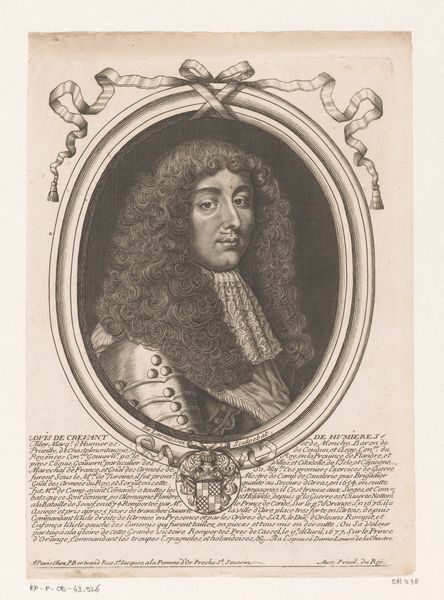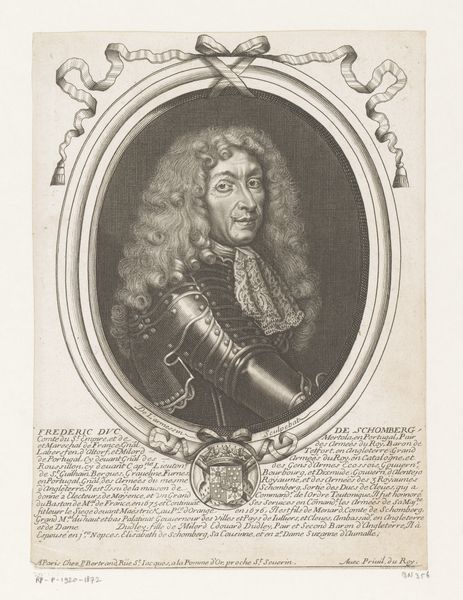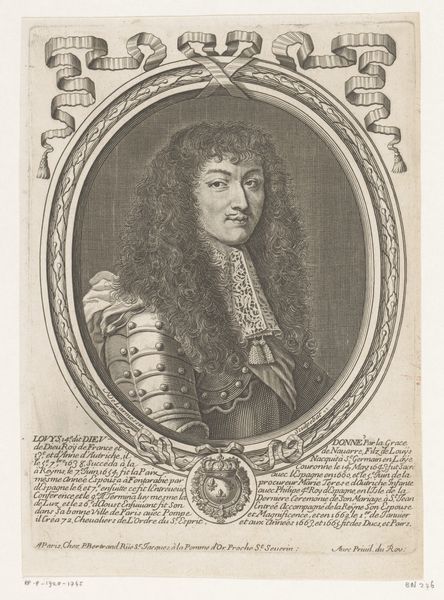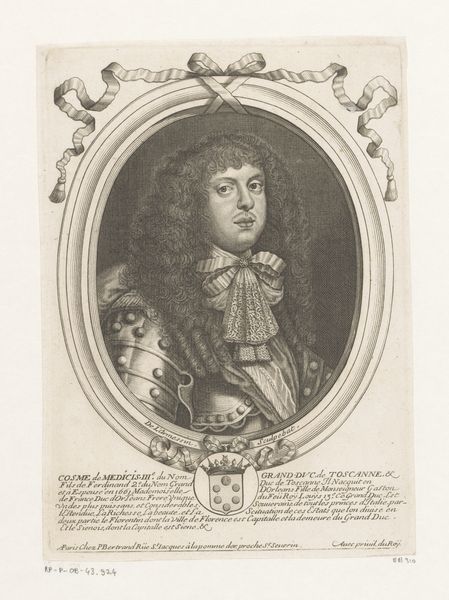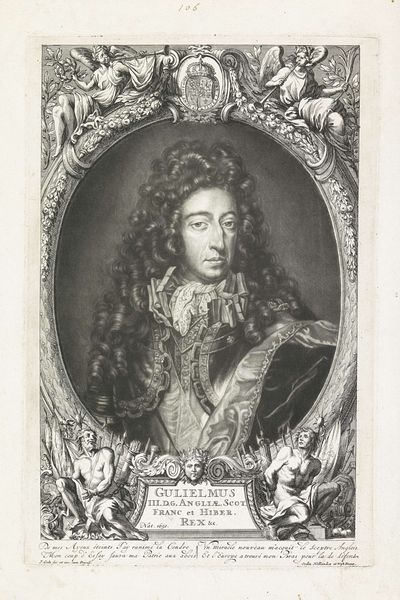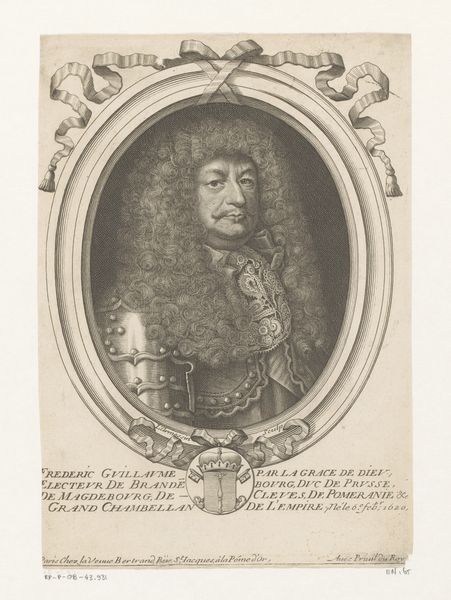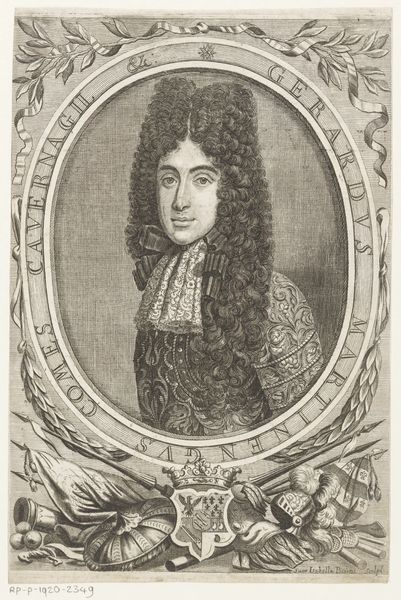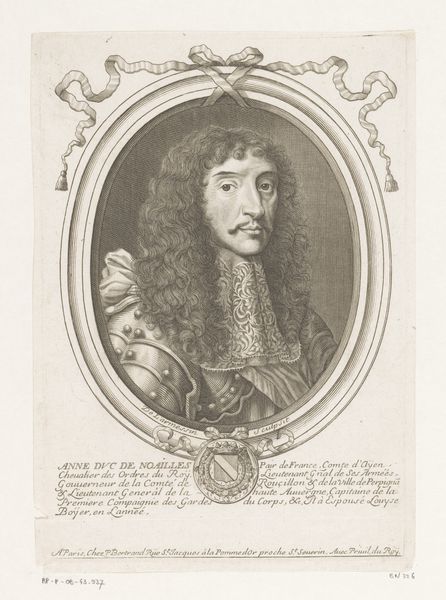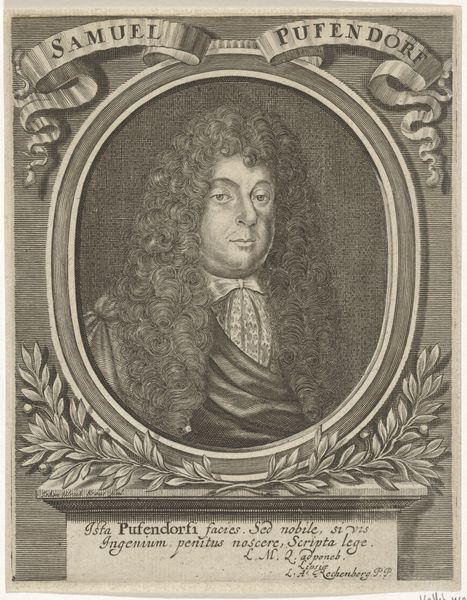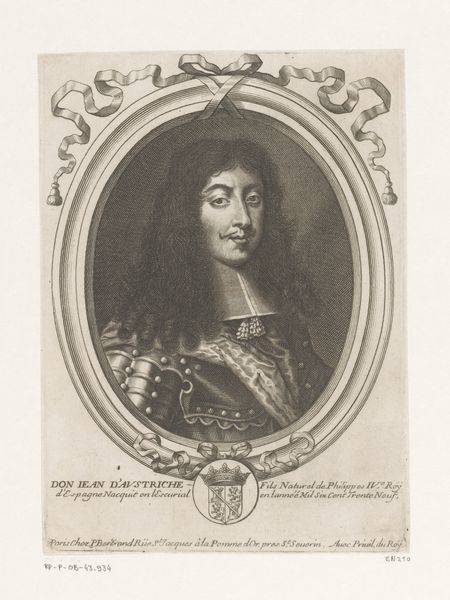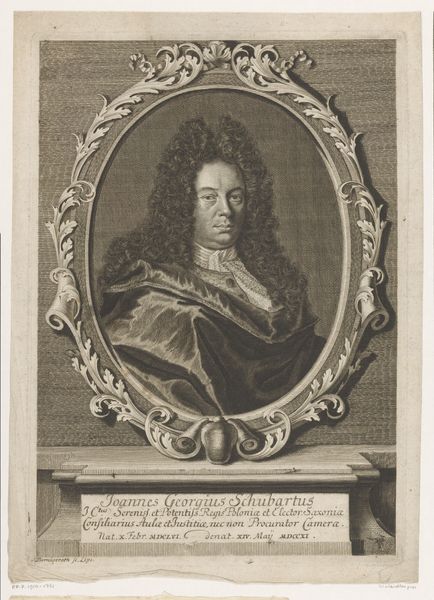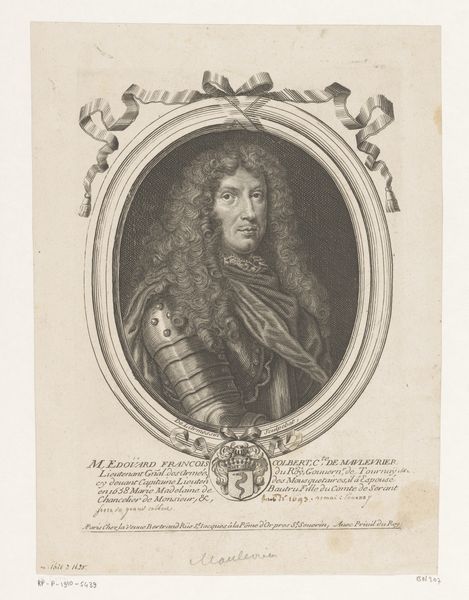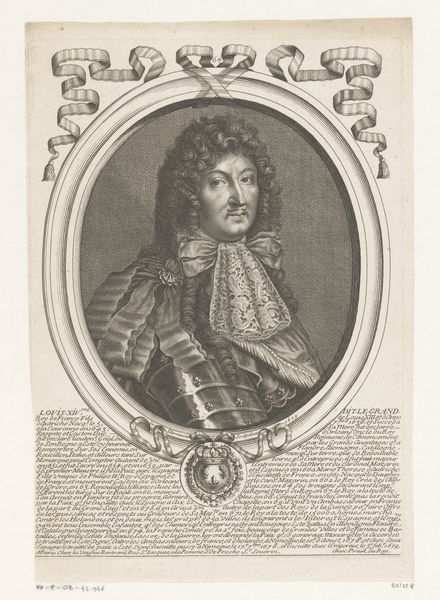
engraving
#
portrait
#
baroque
#
old engraving style
#
history-painting
#
engraving
Dimensions: height 238 mm, width 180 mm
Copyright: Rijks Museum: Open Domain
This print of Guy de Durasfort, Count of Lorge, was made by Nicolas de Larmessin in the late 17th century. It is an engraving, meaning that the image was incised into a metal plate, likely copper, and then printed onto paper. Look closely, and you can see how the network of fine lines creates a range of tones, from the deep blacks of his hair to the light grays of his face. The engraver’s skill is evident in the precise rendering of details, like the lace collar and the polished armor. But think for a moment about the labor involved. Each line had to be carefully cut by hand, a time-consuming process that required both technical expertise and artistic vision. Engravings like this were luxury objects, intended for a wealthy clientele who appreciated the artistry and craftsmanship that went into their production. The print served as a means of disseminating images, celebrating the sitter's status, and demonstrating the engraver's skill in manipulating material to create a lasting impression.
Comments
No comments
Be the first to comment and join the conversation on the ultimate creative platform.
